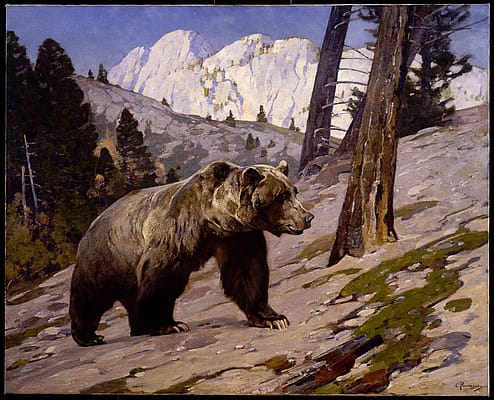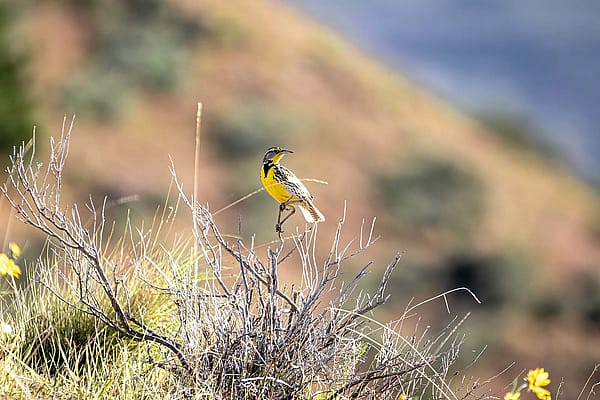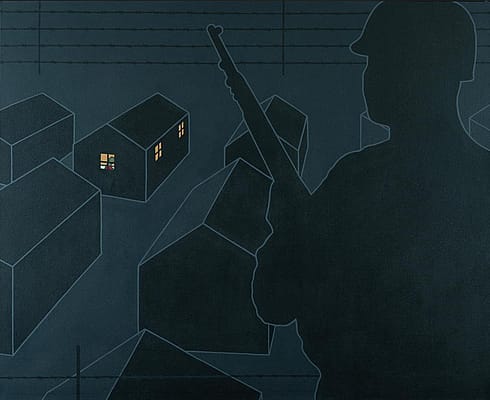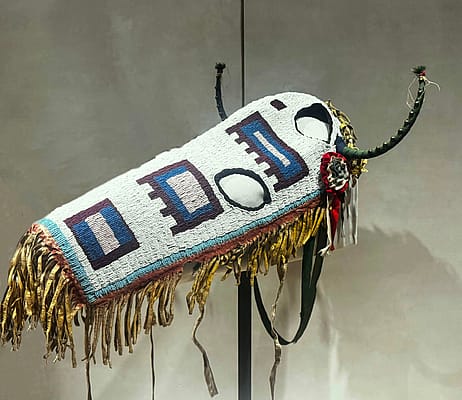
Equipment of a Raptor Handler

Many individuals are fascinated by birds of prey and many facilities do educational programs with their live Avian Ambassadors. Working with raptors in captivity requires lots of animal behavior training for the handler and many people don’t realize it also takes lots of equipment too.
A raptor handlers’ key piece of equipment is the glove. When handling raptors always wear a glove! The gloves are worn on the handler’s left hand, which means the equipment is attached using the handler’s dominant hand.
Glove:
1.) Raptors sharp beak and talons can cause puncture marks.
2.) The glove provides a comfortable perching surface making it a positive experience for the bird when they are handled on the glove.

3.) They come in different sizes, thicknesses and lengths. Small gloves cover a little bit past the wrist and can be used for: small owl species, American Kestrels and small hawk species. Medium gloves cover majority of the forearm and can be used for: Red-tailed Hawks, bigger owl species and Peregrine Falcons. The eagle glove is a long glove which covers past the elbow with the addition of the eagle sheath that slides over the glove. Giving double protection from the long razor-sharp talons of a Bald or Golden Eagle.
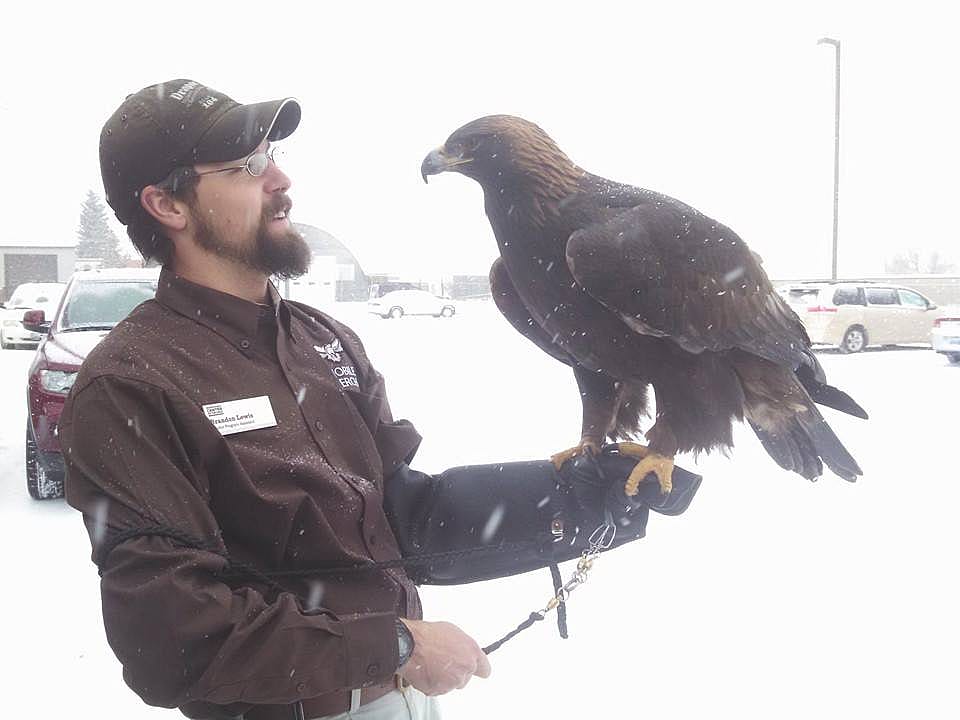
4.) Wearing it shows the public you have respect for your bird, no matter what size. Awareness that raptors are trained ambassadors, not pets.
Keeping the birds comfortable and safe on the glove require several pieces of equipment specifically for them. The two most important pieces for them include: anklets and jesses.
Anklets: Wrap around the lower leg just above the foot like an ankle bracelet. Usually made of single leather or braided nylon cord. Closed together with a grommet.
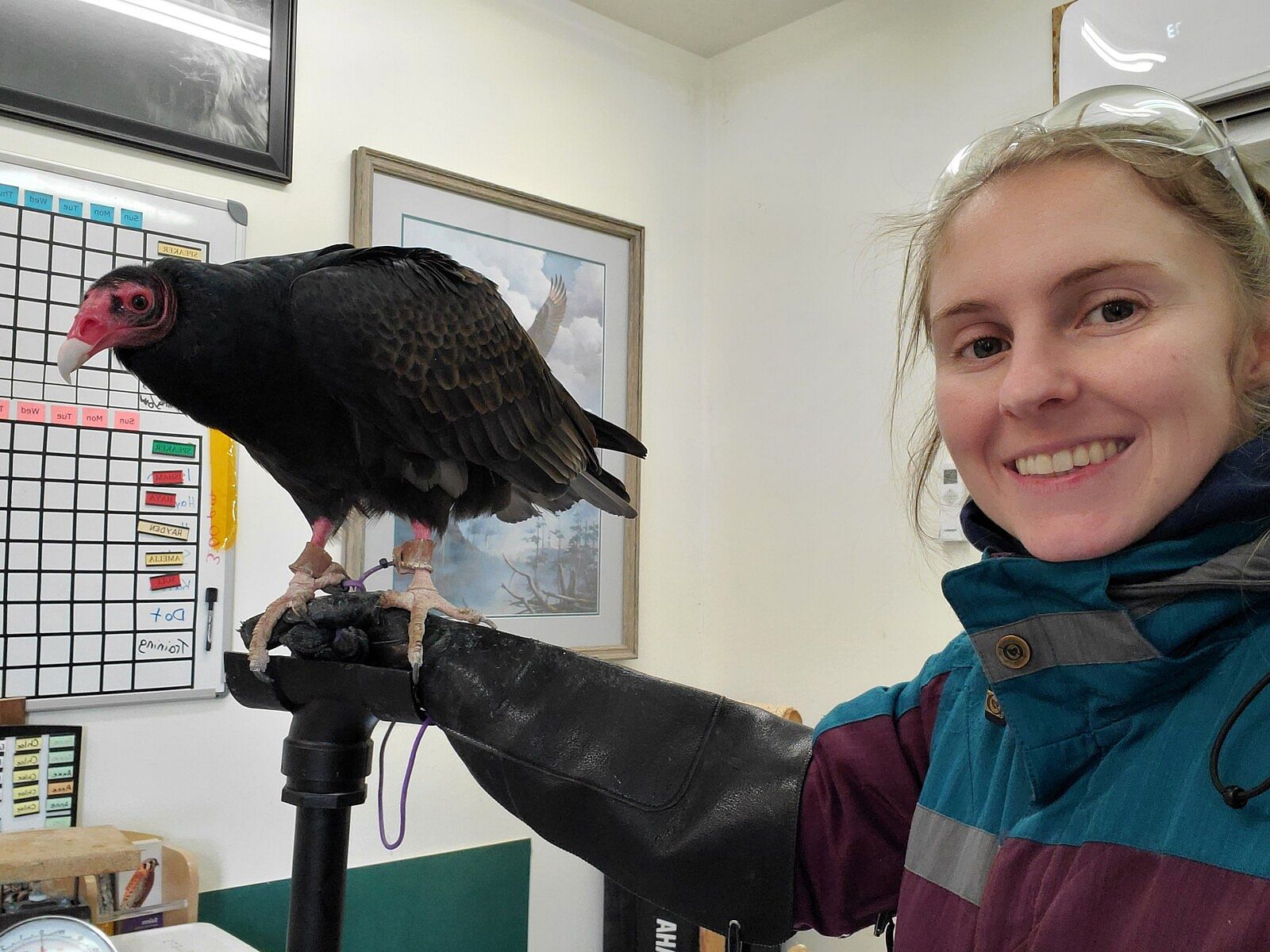
Jesses: Straps made of single leather or braided nylon that slips through the grommet in each anklet. They hang down and connect to a swivel. These give the bird length to still pick up and move their feet on the glove if needed. The length of these can vary depending on how small or big the raptor is.
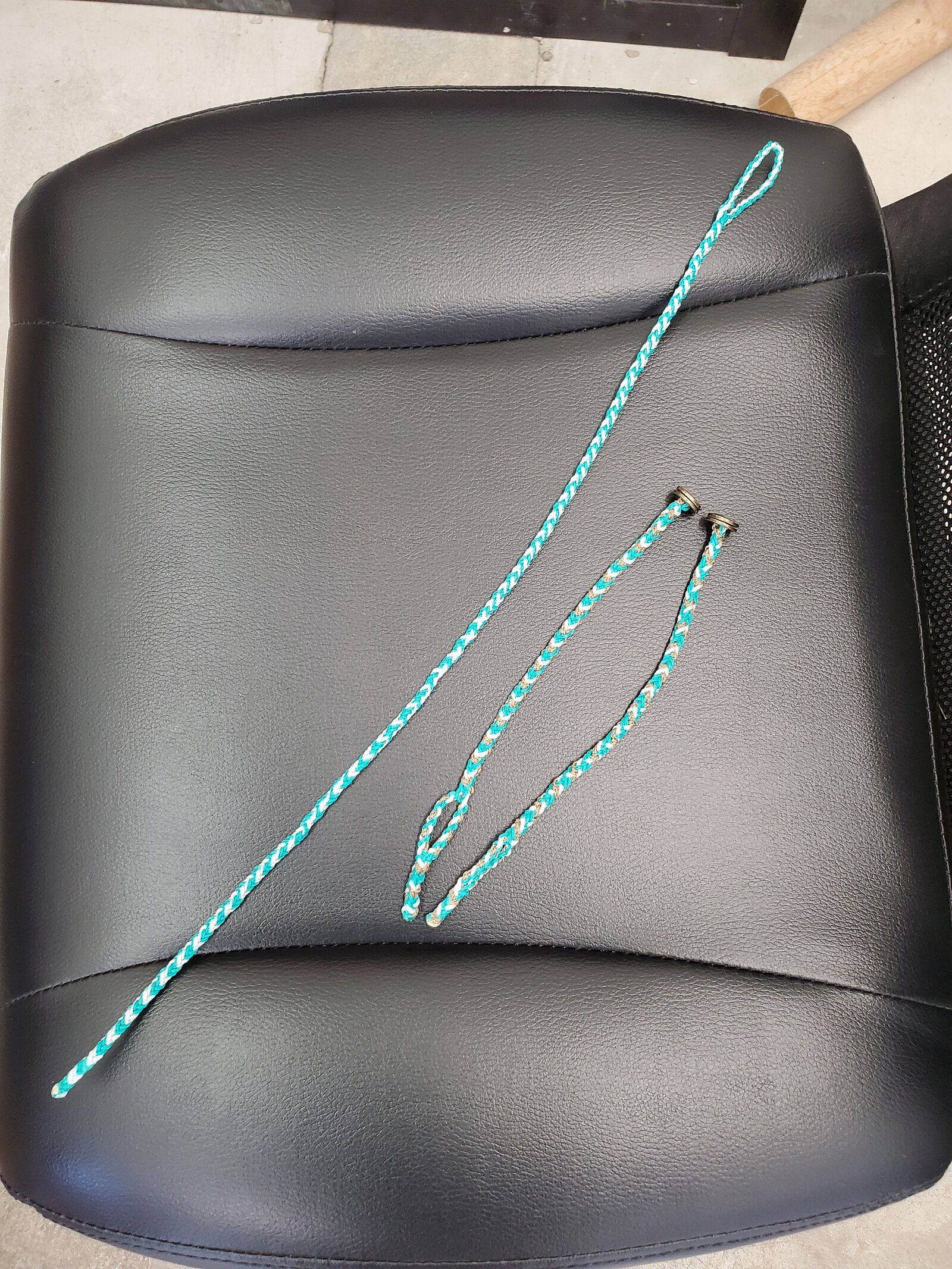
Two-Ring Swivel: Connects the jesses to the leash. One end is stationary and the other rotates. This system is very useful as it allows the jesses to rotate in the grommets decreasing the chance of your bird getting twisted.
Swivel size varies depending on size of the bird. This piece of equipment is only used if the bird is being held on the glove, in their travel boxes or tethered to a perch. The swivel is also attached only using one hand, as the bird would be standing on the handler’s left arm, with the jesses woven through the handler’s fingers. The jesses slide through the stationary side of the swivel and the leash connects to the rotating side. The jesses are held in the hand the bird is perched on and they are looped over the ring finger and under the little finger to securely lock the bird into the hand.
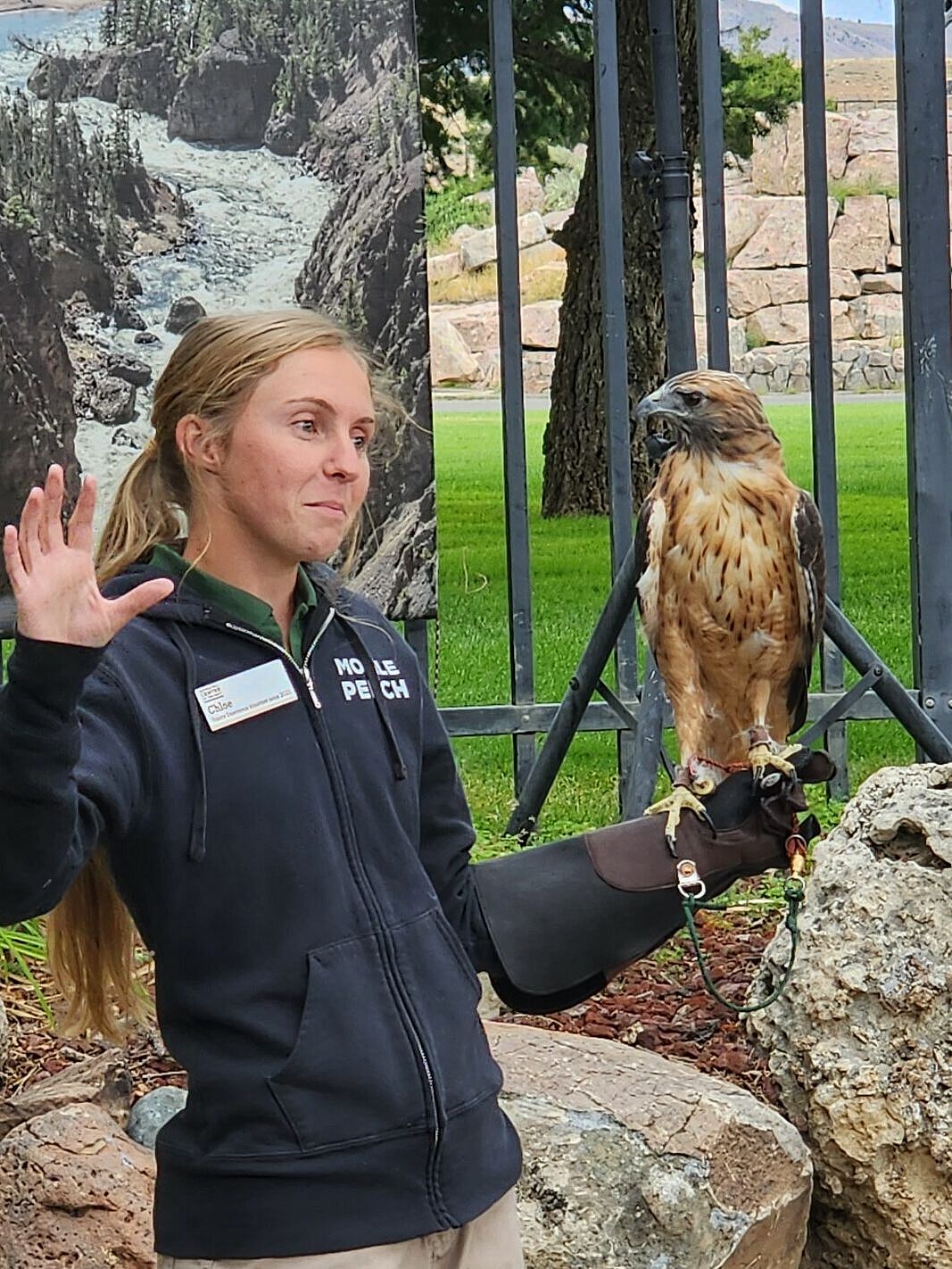

Leash: Made from a single strap leather or braided nylon. Often have a slit at one of the ends for the swivel to slide through. After connecting to the swivel, the other end is tied to the gloves D-ring with a specific knot. The leash is important as it prevents accidental escape and keeps it safe from potential injury if the bird chooses to bate.
What is a bate?
“Bate” describes when the bird decides to fly off the glove. Remember the jesses are locked into the handler’s glove and the leash is tied to the glove. So, the bird is slowed and either does a summersault and lands back on the glove which many captive birds are quite good at this or they are brought to a halt and end up hanging upside down from the glove. Either situation the handler can assess and help the bird, if necessary, by holding the glove still and reaching around to press on their back and help them get back onto the glove.
There are also a few notable species that present challenges when using equipment and require additional maintenance and monitoring. These species include vultures, owls and hawks that all have feathered legs. All these species can get potential skin irritants, feather loss and cause equipment to malfunction. One way to avoid this problem is to keep the anklets soft and loose to allow sufficient rotation of the leather around the leg.
For program birds like we have here at the Center of the West the bird needs: anklets, jesses, leash and swivel to allow the avian ambassadors to be comfortably restrained on the glove. The pieces of equipment must always be monitored for wear, as old or faulty equipment can lead to serious injury of the bird. These are only a few of many other pieces of equipment that are useful in caring for raptors in captivity.
Written By
Chloe Winkler
After earning her Bachelor's Degree in Zoology from the University of Wyoming, Chloe Winkler began volunteering with the Draper Museum Raptor Experience. She was the summer intern in 2021 and is now the seasonal raptor keeper/presenter for the program. Chloe loves every aspect of working hands-on with birds of prey. Everything from husbandry, creating enrichment, and giving educational programs. Chloe is passionate about sharing the birds' fun facts and their important conversational stories to guests from all over the world.






